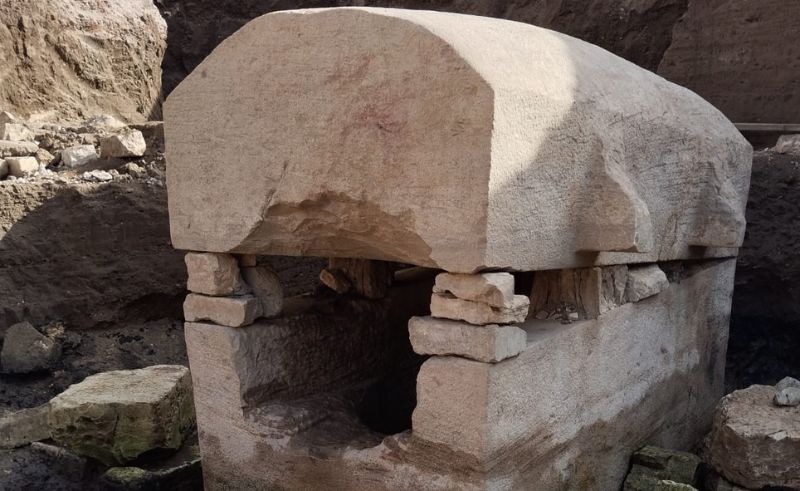26th Dynasty Sarcophagus Unearthed at Benha University Hospital
Based on initial investigations by the Supreme Council of Antiquities and the Grand Egyptian Museum, the sarcophagus belonged to the scribes' supervisor under the reign of King Psamtik I.

A new discovery has emerged from the Nile Delta: a 26th Dynasty sarcophagus, unearthed during the construction of a new building at Benha University Hospital. Saved from potential damage by a rescue excavation from the Supreme Council of Antiquities (SCA), this historical treasure is now on its way to the Qalyubia archaeological site for thorough restoration.
-9e62cd80-a89f-486a-ac23-ef5c233f6b4d.jpg)
The 26th Dynasty, spanning from 664 to 525 BC, is considered a period of cultural and economic revival in ancient Egypt. This sarcophagus offers a glimpse into the burial practices and craftsmanship of the time. Mr. Mohamed El Saiedy, Director of the Scientific Office of the Secretary-General of the Supreme Council of Antiquities, pointed out that the coffin is made of quartzite stone and dates back to the reign of King Psamtik I.
Preliminary studies conducted at the excavation site suggest that the sarcophagus belonged to the overseer of the scribes during the reign of King Psamtik I. There is an incised engraving on the underside of the coffin's cover depicting the cartouche of King Psamtik I. This inscription, alongside other potential details revealed through restoration, could offer valuable insights into the social and administrative structure of the 26th Dynasty.
-01559fa6-e9e0-4b8c-a1ec-fa9fd82b9376.jpg)
Following a meticulous excavation process, the sarcophagus, weighing approximately 62 tons including its lid, is now being transported to the Qalyubia archaeological site. The Ministry of Tourism and Antiquities and The Supreme Council of Antiquities will continue the rescue excavation works until all activities at the site are completed and ensure there are no other archaeological finds at risk of damage.
Trending This Week
-
Dec 27, 2025



























